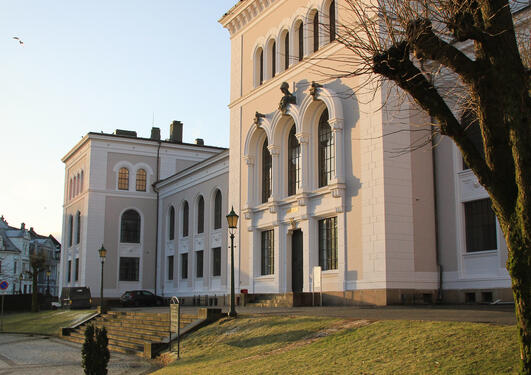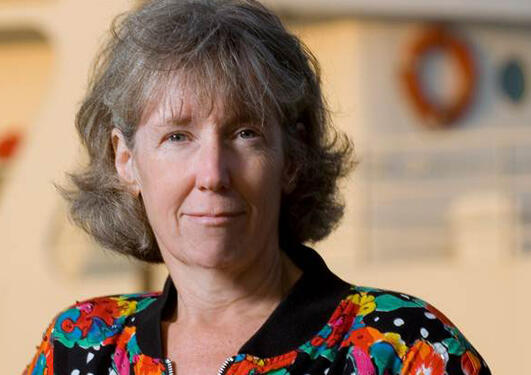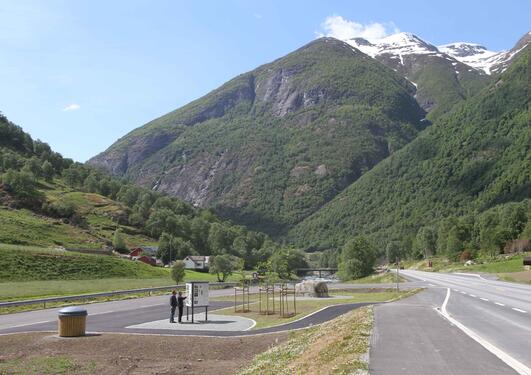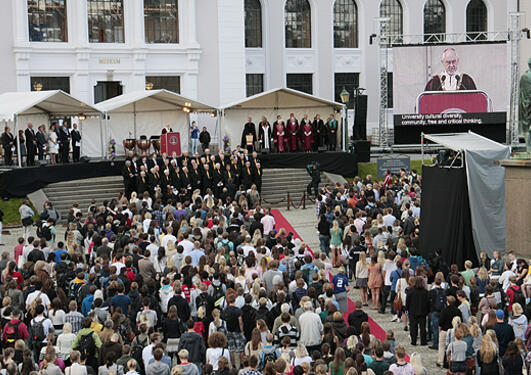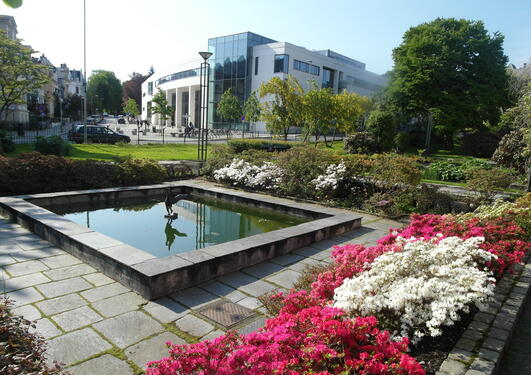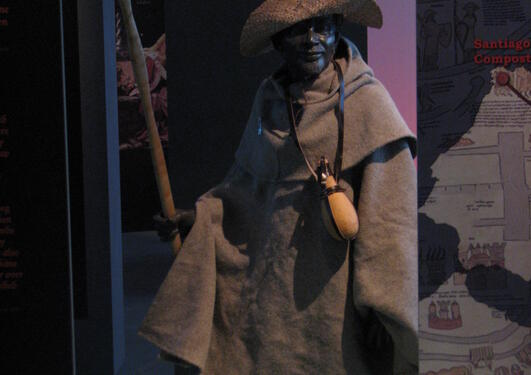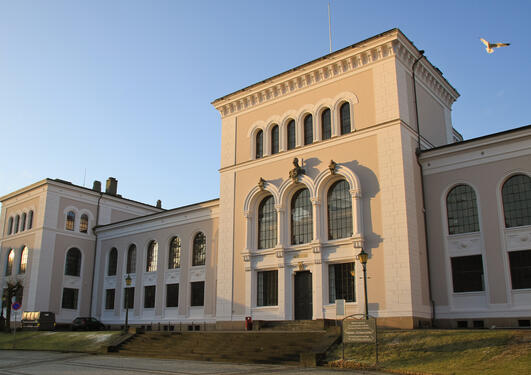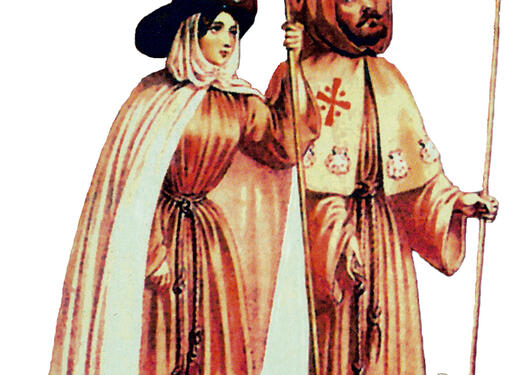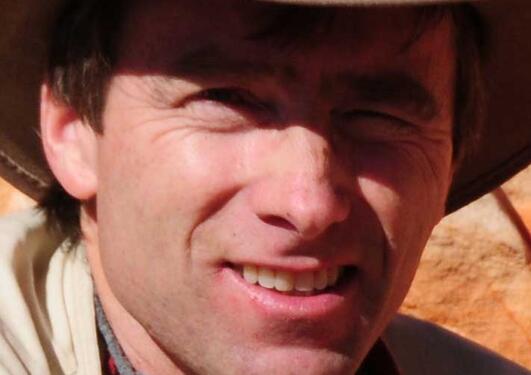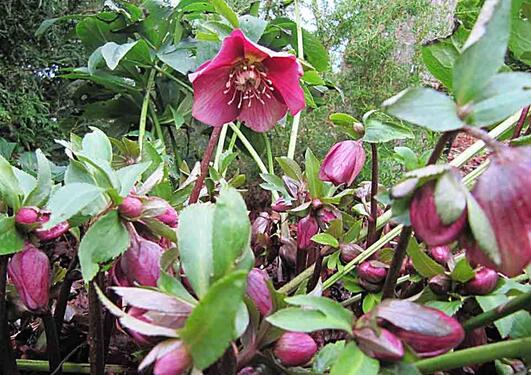News archive for University Museum of Bergen
The University Museum, the Cultural History Collections and the Natural History Collections will both close at 13.00 on Friday 5 October.
The Ausevik rock art site in Sunnfjord, the second largest in Western Norway, is located on phyllite, a type of rock which presents challenges as regards disintegration and dissolution.
How to manage the vulnerable ecosystems of the world’s oceans at a time when the industrialisation and exploitation of resources go further and deeper?
If you are passing through Lærdal and Bjørkum during summer, you’re travelling on truly unique historic grounds. New information boards in English and Norwegian provide information about, among other things, an extensive craft production that took place here during the Viking Age.
We welcome all visitors to the University Museum this summer! The Museum is open every day, except Mondays, from 10.00 (Sat/Sun: 11.00) to 16.00. Please note that The Natural History Collections (Muséplass 3) will be closed on 14 August on the occasion of the opening of the new academic year.
The University Museum has extended opening times during the summer months. From 1 June to 1 September the two museum buildings are open Tuesday to Friday, from 10.00 to 16.00, and from 11.00 to 16.00 at weekends.
Did you know why they mummified people in ancient Egypt? Did you know that ancient Egyptians also mummified cats, crocodiles, bread, and even fish?
How long has fish existed here on earth? Where do flounders live? What is the biggest fish and what is the smallest fish?
Nine hundred years have passed since Munkeliv Monastery was founded as the first of a total of seven in Bergen. The monasteries were internationally oriented. They contributed to the development of the city and gave Bergen a cosmopolitan character that it has retained up to the present time.
This is the theme that researcher Hilde Inntjore addresses in her lecture, which is the first one out in this spring’s series related to the Museum’s exhibition Fragments of the Past.
On Wednesday evening 29th February, the University Museum of Bergen has organised a jam-packed programme in both Museum buildings: "Night at the Museum" and a Lecture on soul-saving gifts in the Middle Ages. There will be something to suit audiences of all ages.
The University Museum, both The Natural and Cultural Collections, will be closed on Friday 24th February.
The Director of the University Museum of Bergen, Christoffer Schander has died after a short period of illness. He was only 51 years old when he died.
People living in Bergen in the Middle Ages loved entertainment and good literature, and a glass or two. At the same time the church warned of judgment day after death. By setting out on a pilgrimage, one could make up for one’s sins and see the world.
A shift, a strapped gown, and a cloak were common female garments in the Viking Age. But how were they designed and used?
Professor Haakon Fossen at the Department of Earth Science and the University Museum of Bergen, UiB has been presented with the award “Nordic Geoscientist Award 2012".
The internationally-oriented research community at Bergens Museum in the 1880s gave him an opportunity to get in touch with international contacts within biology and zoology. The milieu at home and his contacts abroad inspired Nansen to produce specialist results.
It is almost unbelievable that the Christmas rose can grow and flower in the middle of the dark period of the year with just a few plus degree temperatures.
Pages
- October 2024 (4)
- September 2024 (1)
- August 2024 (1)
- July 2024 (3)
- June 2024 (1)
- April 2024 (2)
- March 2024 (1)
- December 2023 (2)
- November 2023 (2)
- October 2023 (3)
- September 2023 (1)
- June 2023 (1)
- May 2023 (1)
- April 2023 (2)
- March 2023 (2)
- January 2023 (2)
- October 2022 (2)
- September 2022 (2)
- August 2022 (1)
- July 2022 (4)
- June 2022 (1)
- May 2022 (3)
- April 2022 (5)
- February 2022 (3)
- January 2022 (1)
- December 2021 (1)
- November 2021 (1)
- October 2021 (5)
- September 2021 (2)
- August 2021 (2)
- July 2021 (1)
- May 2021 (4)
- April 2021 (1)
- March 2021 (1)
- December 2020 (3)
- November 2020 (1)
- October 2020 (4)
- August 2020 (1)
- June 2020 (3)
- May 2020 (2)
- April 2020 (4)
- November 2019 (6)
- October 2019 (1)
- July 2019 (3)
- March 2019 (1)
- January 2019 (5)
- May 2018 (3)
- February 2018 (1)
- November 2017 (2)
- October 2017 (1)
- June 2017 (3)
- February 2017 (4)
- October 2016 (1)
- September 2016 (2)
- May 2016 (1)
- November 2015 (1)
- September 2015 (1)
- June 2015 (1)
- May 2015 (1)
- April 2015 (1)
- March 2015 (1)
- January 2015 (2)
- June 2014 (4)
- January 2014 (2)
- December 2013 (1)
- November 2013 (5)
- October 2013 (1)
- June 2013 (1)
- May 2013 (2)
- April 2013 (4)
- March 2013 (4)
- February 2013 (4)
- January 2013 (1)
- December 2012 (1)
- November 2012 (2)
- October 2012 (2)
- September 2012 (1)
- August 2012 (1)
- July 2012 (2)
- June 2012 (1)
- April 2012 (1)
- March 2012 (2)
- February 2012 (5)
- January 2012 (4)
- December 2011 (7)
- November 2011 (1)
- October 2011 (3)
- September 2011 (5)
- August 2011 (2)
- June 2011 (4)
- May 2011 (3)
- February 2011 (5)
- January 2011 (1)
- December 2010 (1)
- November 2010 (1)
- October 2010 (2)
- September 2010 (1)
- May 2010 (3)
- April 2010 (1)
- March 2010 (2)
- February 2010 (3)
- January 2010 (1)
- November 2009 (1)
- October 2009 (2)
- September 2009 (6)
- June 2009 (2)
- May 2009 (2)
- March 2009 (1)
- February 2009 (2)
- January 2009 (1)
